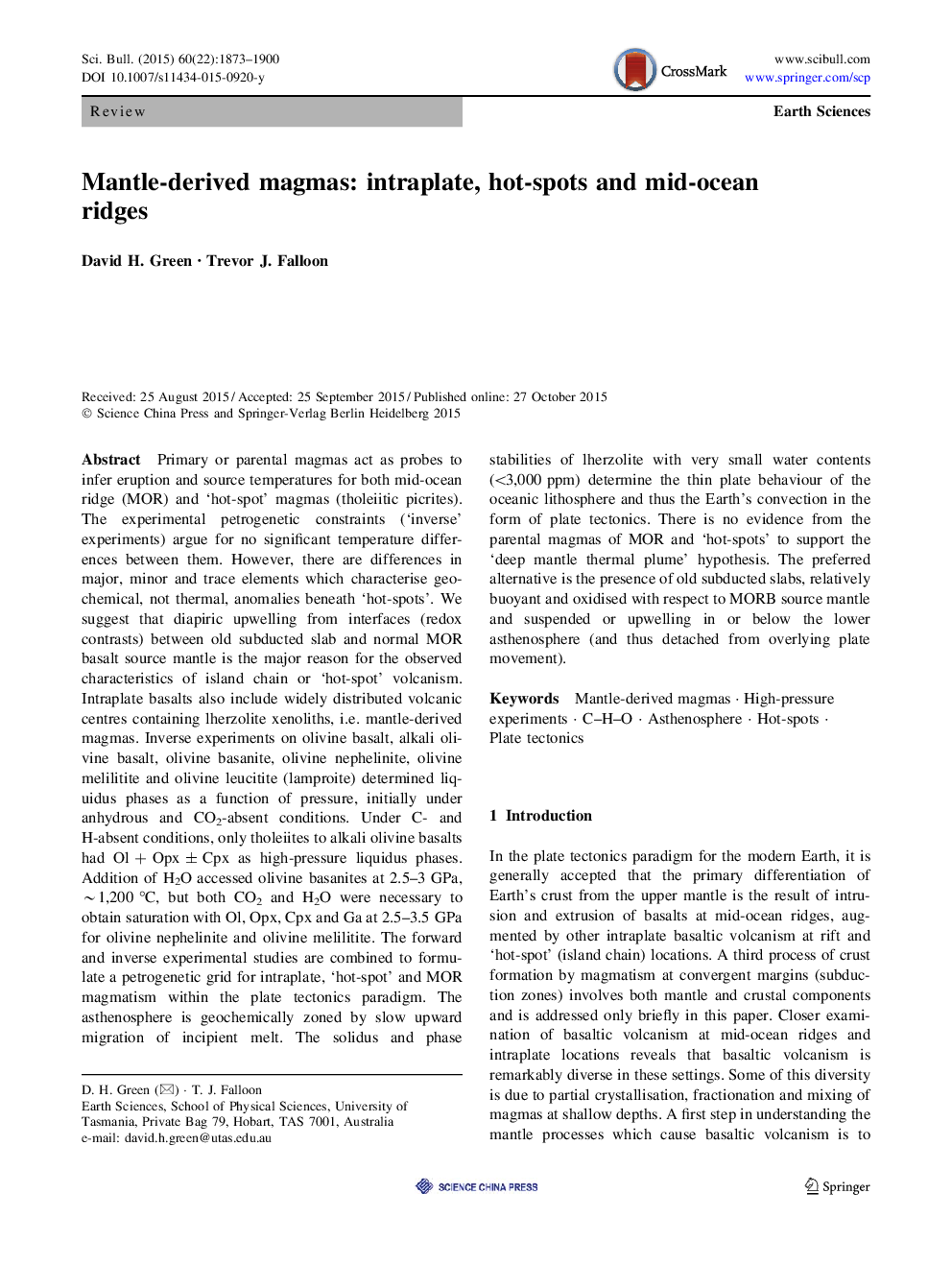| کد مقاله | کد نشریه | سال انتشار | مقاله انگلیسی | نسخه تمام متن |
|---|---|---|---|---|
| 5789142 | 1414297 | 2015 | 28 صفحه PDF | دانلود رایگان |

Primary or parental magmas act as probes to infer eruption and source temperatures for both mid-ocean ridge (MOR) and 'hot-spot' magmas (tholeiitic picrites). The experimental petrogenetic constraints ('inverse' experiments) argue for no significant temperature differences between them. However, there are differences in major, minor and trace elements which characterise geochemical, not thermal, anomalies beneath 'hot-spots'. We suggest that diapiric upwelling from interfaces (redox contrasts) between old subducted slab and normal MOR basalt source mantle is the major reason for the observed characteristics of island chain or 'hot-spot' volcanism. Intraplate basalts also include widely distributed volcanic centres containing lherzolite xenoliths, i.e. mantle-derived magmas. Inverse experiments on olivine basalt, alkali olivine basalt, olivine basanite, olivine nephelinite, olivine melilitite and olivine leucitite (lamproite) determined liquidus phases as a function of pressure, initially under anhydrous and CO2-absent conditions. Under C- and H-absent conditions, only tholeiites to alkali olivine basalts had Ol + Opx ± Cpx as high-pressure liquidus phases. Addition of H2O accessed olivine basanites at 2.5â3 GPa, ~1,200 °C, but both CO2 and H2O were necessary to obtain saturation with Ol, Opx, Cpx and Ga at 2.5â3.5 GPa for olivine nephelinite and olivine melilitite. The forward and inverse experimental studies are combined to formulate a petrogenetic grid for intraplate, 'hot-spot' and MOR magmatism within the plate tectonics paradigm. The asthenosphere is geochemically zoned by slow upward migration of incipient melt. The solidus and phase stabilities of lherzolite with very small water contents (<3,000 ppm) determine the thin plate behaviour of the oceanic lithosphere and thus the Earth's convection in the form of plate tectonics. There is no evidence from the parental magmas of MOR and 'hot-spots' to support the 'deep mantle thermal plume' hypothesis. The preferred alternative is the presence of old subducted slabs, relatively buoyant and oxidised with respect to MORB source mantle and suspended or upwelling in or below the lower asthenosphere (and thus detached from overlying plate movement).
Journal: Science Bulletin - Volume 60, Issue 22, November 2015, Pages 1873-1900